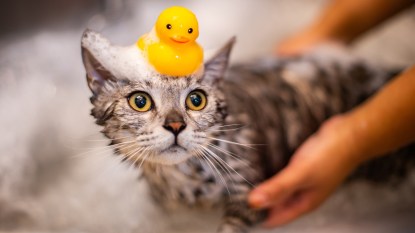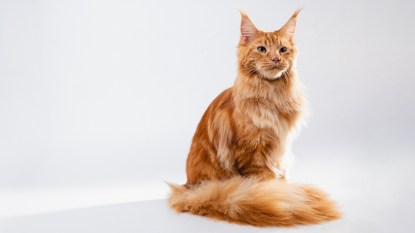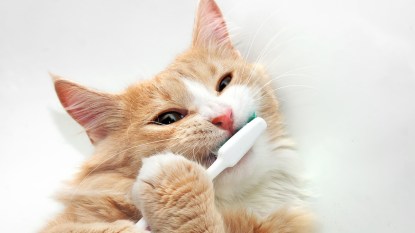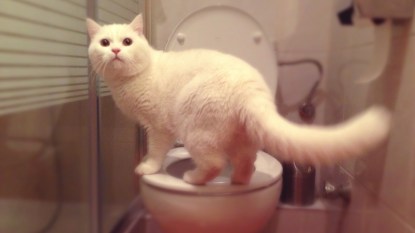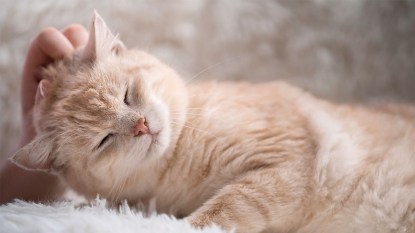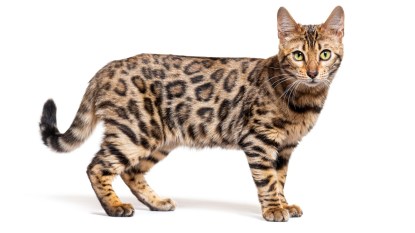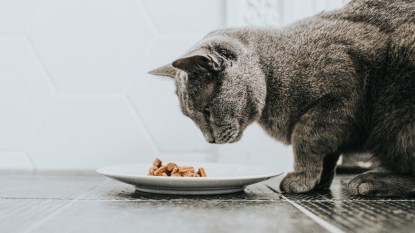What Does “Meow” Actually Mean? A Cat Language Expert Has the Answer
The linguist Susanne Schötz has translated the vocalizations uttered by domestic cats.
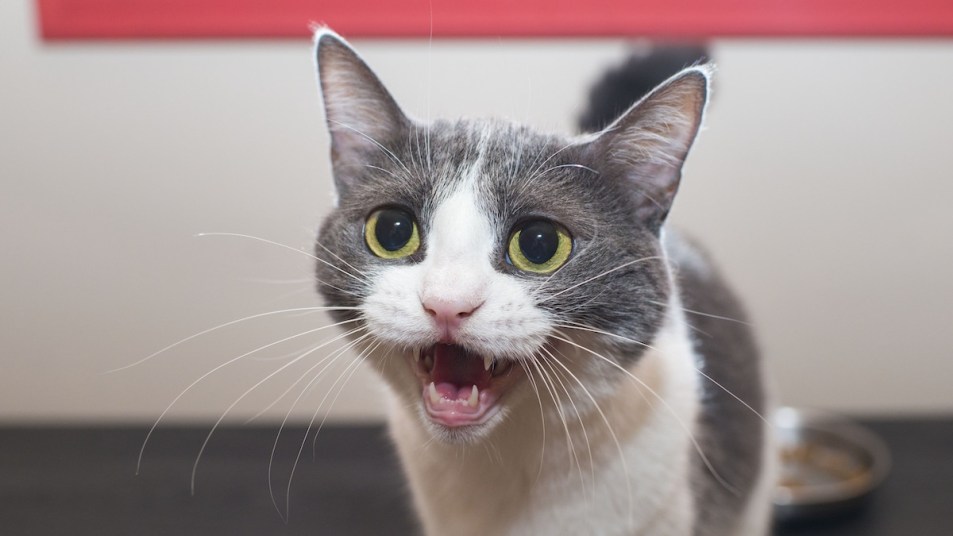
Cats have a unique language constructed especially for humans and made of meows. Susanne Schötz, a specialist in human melody at Lund University in Sweden and author of The Secret Language of Cats (Buy from Amazon, $10.99) ultimately tuned in to that feline cadence. “A meow in the kitchen at breakfast time was different than meow when a cat was locked up in a closet by mistake,” she says. Her cat’s meows — and your cat’s — vary with situation, need, and intent. Schötz says meows didn’t start with domestication, but it was domestication that taught cats how to use meows to communicate with us. Unlike cats, we can’t identify others through sense of smell, and we have a narrower visual field than they do. So cats have discovered that, to get our attention, sound works best. And while domestication didn’t make the cat meow, it probably changed the quality of that sound. Indeed, the meow is similar to the cry of the human infant, sure to hit the human heart and get us to respond.
In the Q&A interview that follows, Schötz describes the results of her research and how it can help us interpret the vocalizations of our cats at home.
Do cats communicate differently with humans than with other cats?
Meowing is mainly addressed to humans. Kittens meow but adult cats rarely meow to each other. Adult cats that are friends greet each other with trilling or purring. I have cats that are siblings, and they sometimes hiss at each other when they get in each other’s way.
Does every meow mean the same thing?
After we got our grant, we started to record more cats and, mainly, the conversation between humans and cats. We recorded the cats in several contexts: Feeding time, when cats or humans wanted to play, when they want to be let out, bringing the cats to vets in carriers. We found variation depending on the context.
Can you describe the variation?
All the categories are interesting. Trilling is a friendly sound between cats who are friends. Hissing, howling, spitting, growling, snarling — these are aggressive or defensive sounds. Meow means I’m hungry, I want to play, I’m bored, I’m in distress. The meow has many more meanings and so we are studying it first by looking at dialect and melody.
Can you explain what the terms dialect and melody mean for the study of vocal language?
In the human languages I study, a dialect is a type of language spoken in a specific geographic region. Melody, or intonation, refers to rises and falls and other variations of tone from dialect to dialect. Sometimes melody can be universal across dialects. For instance, I raise my voice at the end of a sentence if I’m uncertain or if we are friendly, as in this question: “Is this OK?” On the other hand, if I want to say something I am certain of, my voice will fall: “This is what melody is all about.”
But melody can vary from dialect to dialect as well. How does that work in humans?
Let’s look at an example in a language you probably don’t know, Swedish, where we have several dialects and use melody to distinguish between them. In south Swedish, which is my dialect, for instance, the word for “spirit” is “andan” — we pronounce it “AN-dan,” with a peak at the first syllable. But in Stockholm there are two tonal peaks, and they say “AN-DAN.” There are languages like Mandarin Chinese that have four tones on the same syllable to mean four things, and some Chinese dialects have six different tones for a single word.
Now let’s apply these same rules to the secret language of cats. How does that work?
There are so many meow variants, and I have been able to use my knowledge of phonetic methods to divide meows into subtypes based on types of vowels and consonants; loudness and softness; and whether the melody is falling, or rising, or rising and then falling — things like that.
What are the subtypes?
I have found four subtypes. One is the “mew,” which is a high-pitched meow that often contains the “e” and “i” vowels — “mieww!!” Kittens use this when they’re distressed or need attention from other cats. Adult cats keep this sound to get attention from humans. There is the squeak, with an “ahhhh vowel.” Squeaks are made with an open mouth — the sound imitates distress but the squeaking cat really just wants to play. Then there is what I call the “meo moo”; this is a sad sound. “I am trapped in my carrier, trapped indoors, feeling stress.” In the “meo moo” the melody rises and then falls toward the end. The “meo-mooing” cat does not want to be there. Finally, we have the typical “meow,” which includes several vowels.
And this has a special sound too?
It sounds like it is spelled. The mouth opens, then closes. The meowing cat is seeking attention, but can have a range of meanings depending on the meow. She can sound hungry, or be asking to cuddle or play. Depending on the degree of urgency, these meows can vary indefinitely. This sound contains a lot of variation and that makes it especially interesting to me.
I take it the general meow is not really a one-size-fits-all universal language but rather varies across a range of dialects and melodies.
Exactly. It varies in vowels, in tone of voice, in melody — and each cat has a personal voice quality, some in a low pitch and others in a high pitch, and depending on a cat, these can mean the same thing. It is up to a human caretaker to decode and learn the differences in sound, to interpret. Cats try different sounds when they communicate with their humans, and those sounds that get the results — for instance, if a sound is effective in getting the owner to feed the cat — those are the sounds the cat keeps on using for that goal.
What about the sounds beyond the meow that cats use to communicate with other cats?
Notice two cats howling at each other. The cat with the loudest, darkest, lowest frequency howl tends to win. That sound says, I am the biggest and most aggressive. When one cat wins the howling contest the other cat goes away very slowly. The one with the higher pitched howling turns around in slow motion and leaves the territory of the winning cat. Sometimes fighting is inevitable but there are many instances where cats resolve their conflict simply by howling at each other.
What happens with equal howls?
I have never witnessed this happening.
And other forms of language?
Cats communicate through body posture, head movements, even eye and ear movements. The wagging tail means the cat is attentive — but the more the tail wags, the more upset the cat might be getting. If the tail is like a large brush and the fur is piled up — that animal is saying I want to be big, she’s defending herself.
And what about the sense of smell? Cats famously mark their territories with scent.
The cat’s sense of smell is not as good as the dog’s, but it is so much better than ours. It’s been harder for us to study because we don’t pick up the scents ourselves. We know that females in heat leave their scent, and cats of both genders use scent to mark their territory on a tree. Because scents fade with time, they reveal how long ago the other cat was there — and its gender and age. A scent can even communicate a cat’s state of health.
What about homes with multiple cats? Do cats within a given space pick up the same language?
Cats living together in a group develop a group dialect and listen to what other cats are saying to get what they want, and they adopt those successful sounds. Cats also literally pick up a tone of voice from their humans.
Can you explain how cats can ultimately benefit from all of this work you’ve done?
We will be able to better understand our cats, not just in our homes, but in shelters and sanctuaries. We’ll be able to hear the difference between a cat who is stressed and one in pain.
Human language is ancient and has been passed down generation to generation for the length of our species. Is the same true for cats?
Sometimes breeds of cats vocalize differently. Siamese cats tend to be very vocal. Bengals tend to vocalize in longer and darker tones of voice. Breed has something to do with how cats vocalize — but the melodies they pick up from their humans and other cats influence the dialect as well. Cats do not have a language like humans. They don’t have grammar or a large number of words. But they have what they need.
A version of this article appeared in our partner magazine, Inside Your Cat’s Mind, in 2022.


